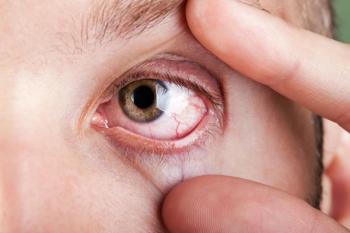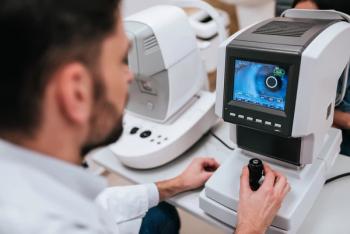
CRU 2025: Rethinking first-line glaucoma therapy
Deborah Ristvedt, DO, and Melissa Tawa, OD, FAAO, detail the benefits of interventional glaucoma during their CRU 2025 presentation.
Deborah Ristvedt, DO, and Melissa Tawa, OD, FAAO, encouraged optometrists and ophthalmologists alike to rethink drops as the first-line therapy for patients with glaucoma in their CRU 2025 presentation “MIGS and DIGS: Glaucoma Devices and Surgery.”1 Presented on March 30 in Napa, California, the presentation overviewed the importance of interventional glaucoma, which prioritizes a proactive vs a reactive approach to prevent disease progression by utilizing early procedural intervention.
“It's a lot for changing the whole algorithm period on how we're treating glaucoma, and we can't do it without collaboration with all of us getting on board to help patients and to improve quality of life,” Ristvedt said.
She noted that a significant challenge that comes with the traditional approach to glaucoma treatment is adherence. Research shows that more than 90% of patients are nonadherent regarding medication use, with about 50% of patients purposely discontinuing their medication(s) within 6 months of initial prescription.2
“Let’s remember what drops do long term,” Ristvedt said. “They cause hyperemia, they cause fat atrophy, ocular surface disease. Some can cause pigmentary changes or iris color changes. So are they as benign as we think they are? Medications work, I love medications, but are we taking them in the right manner?”
Ristvedt also noted that stacking drops increases dry eye symptoms in patients, which can also predict nonadherence. In a study evaluating 19,665 patients with glaucoma, dry eye disease prevalence increased from 51% to 60% between taking 1 and 3 drops for glaucoma treatment.3
Now, Ristvedt recommended that laser procedures like selective laser trabeculoplasty for patients with ocular hypertension and mild and moderate glaucoma should be offered as first-line therapy. Procedural pharmaceuticals can then be recommended for additional treatment, followed by tissue-sparing minimally invasively glaucoma surgery (MIGS), such as trabecular bypass or canaloplasty. Ristvedt also noted that the future glaucoma treatment algorithm may see topical medications used as a supplement to procedural-based intervention. In the case of “bridge therapy,” drops are to be used as a temporary treatment while a patient waits for procedural intervention.1
Ristvedt also stated that through an interventional glaucoma approach, she is also able to deploy the Family, Occupation, Recreation, Dreams (FORD) method of individualizing care. “I really try to cater my [patient] education to the things that I found out about that patient,” she said. “What is it to them that is really important about their vision, about their life? Try to play out that aspect to … get them on board.”
References
Ristvedt D, Tawa M. MIGS and DIGS: Glaucoma Devices and Surgery. Presented at: CRU 2025; March 28-30; Napa California.
Nordstrom BL, Friedman DS, Mazaffari E, Quigley H, Walker AM. Persistence and adherence with topical glaucoma therapy. Am J Ophthalmol. 2005;140(4):598-606.
Erb C, Gast U, Schremmer D. German register for glaucoma patients with dry eye: I. Basic outcome with respect to dry eye. Graefes Arch Clin Exp Ophthalmol. 2008;246:1593-1601. doi:10.1007/s00417-008-0881-9
Newsletter
Want more insights like this? Subscribe to Optometry Times and get clinical pearls and practice tips delivered straight to your inbox.





